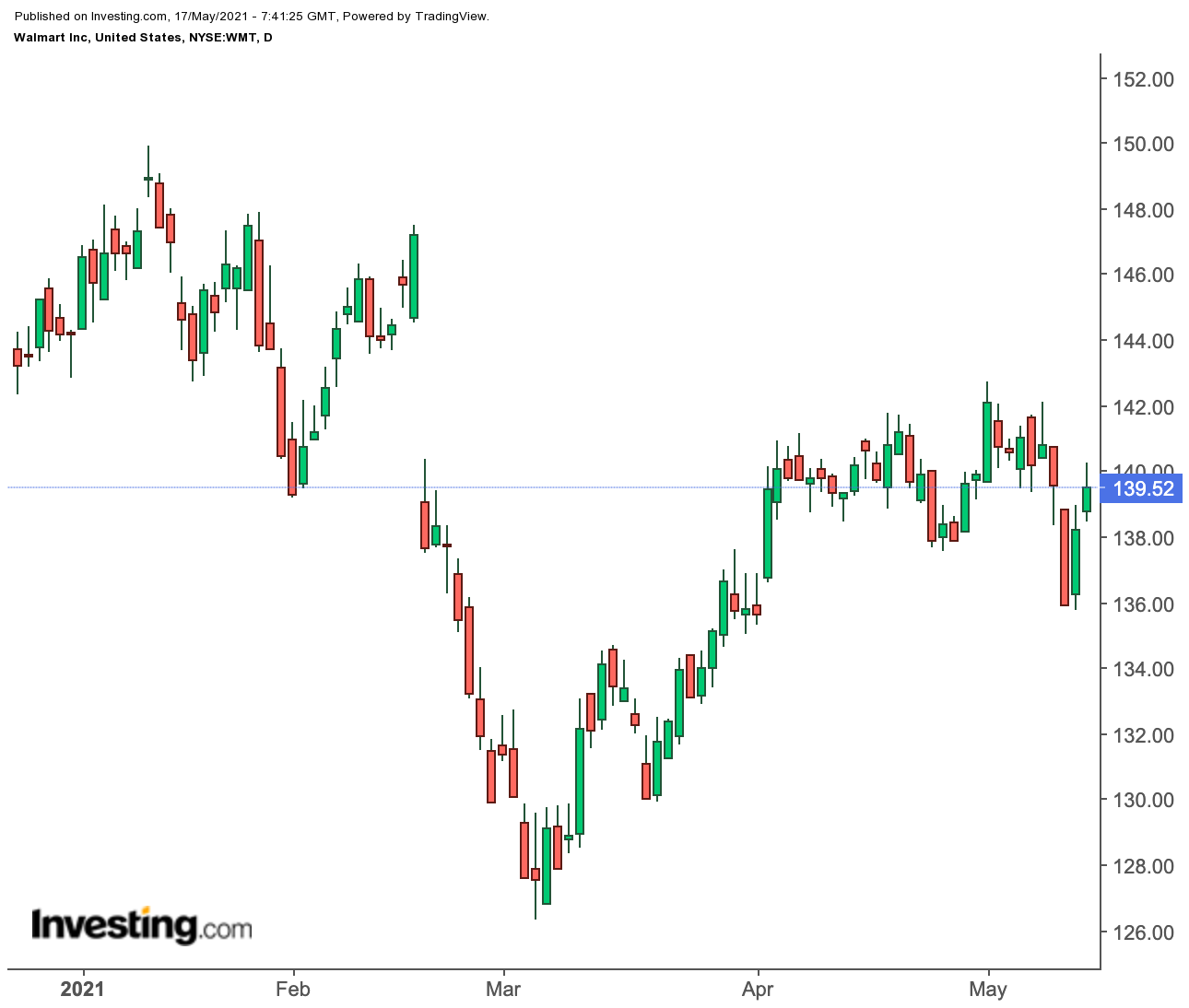The two largest US retailers, Walmart (NYSE:WMT) and Target (NYSE:TGT), report earnings this week and investors will be focusing on their ability to perform in the post-pandemic environment as the economy reopens and people’s buying pattern return to normal.

Both Walmart and Target immensely benefited from waves of pantry-loading that resulted in massive spikes in sales of some categories, such as toilet papers, snacks and cleaning products. As the US economy reopens after a successful vaccine drive, many analysts believe that the best days for these big-box retailers’ sales growth are behind us.
Walmart itself warned in February that it sees a slowdown in sales and profit for the year, saying earnings per share will decline slightly. Although US comparable sales will stay positive this year, according to the Bentonville, Arkansas-based Walmart, they’ll rise in the low-single-digits, below the recent breakneck rate but on pace with estimates.
Analysts for the company’s forecast $1.21 a share earnings on sales of $132.16 billion for its fiscal 2022 first-quarter. The company is scheduled to report tomorrow before the opening bell.
As the normalcy returns to consumer behavior, Walmart is pushing into new growth areas like advertising and web marketplaces, to cash in on its successful digital engagement during the pandemic. Those moves could generate more sales, but there is no guarantee that will succeed in mitigating the hit to its sales in the post pandemic environment.
These uncertainties have stalled gains in Walmart shares, which after gaining 20% in 2020, haven’t moved this year. They closed on Friday at $139.52, down more than 3% for the year.
Targets Wins Substantial Market Share
But the outlook still looks promising for the Walmart competitor Target, a big-box retailer which has won a substantial market share during the pandemic.

Target has attracted new customers and inspired more purchases with its e-commerce offerings and wide range of merchandise, from cereal to workout pants, as competitors like Macy’s (NYSE:M) and Kohls (NYSE:KSS) temporarily closed stores and saw sales decline during the pandemic.
The Minneapolis-based retailer gained about $9 billion in market share in the past fiscal year, citing internal and third-party research. Many analysts believe that Target will be able to hold on to its market share gains even after the pandemic is contained.
The willingness of its customers to keep coming to Target stores is the result of Chief Executive Officer Brian Cornell’s efforts to make Target's retail outlets more attractive. He spearheaded the remodeling of hundreds of stores, introduced many affordable fashion brands and bolstered the retailer’s e-commerce offerings. During the pandemic, Target has been using its stores more as mini distribution centers for its booming digital business, to better fulfill online orders.
Analysts expect the company to report $2.18 a share profit on sales of $21.61 billion when it reports its Q1 2021 earnings on Wednesday before the market open.
With that growth momentum, investors who have invested in Target stock have reaped hefty gains. Its shares have continued their upward journey this year, outperforming strongly when compared to its peers. Target stock is up 20% this year, closing on Friday at $211.16. The stock has gained more than 75% during the past one year.
Bottom Line
We like both Walmart and Target for long-term investment. Each is a reliable defensive stock which one could buy and hold. That said, Target is in a better position to continue delivering strong gains in the post pandemic world, given its expanding market share and remodelling of its stores. This week’s earnings might provide further evidence in support of this view.
